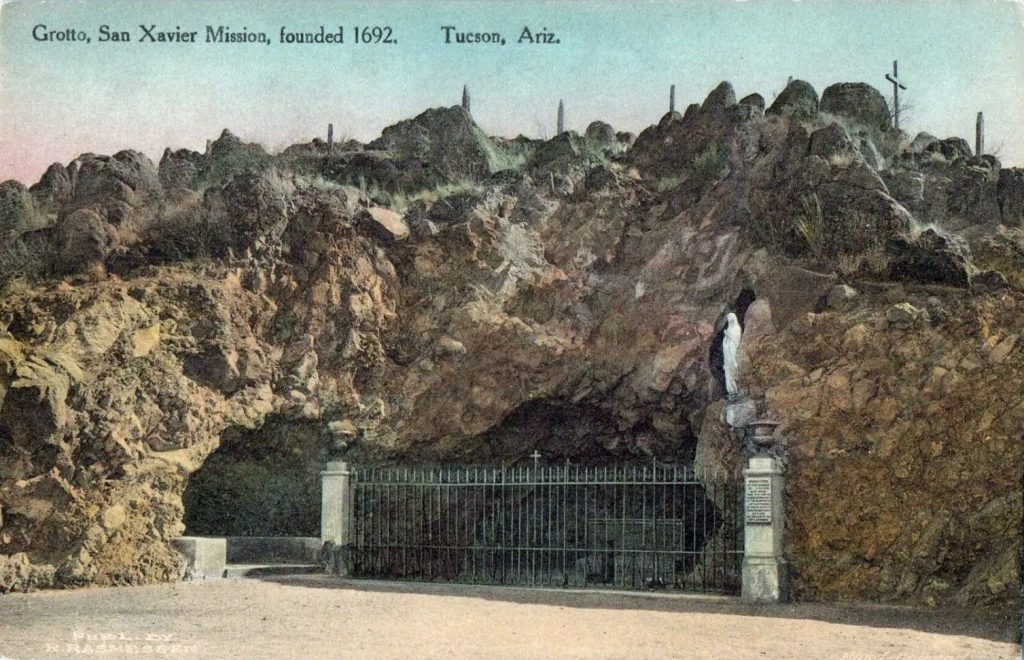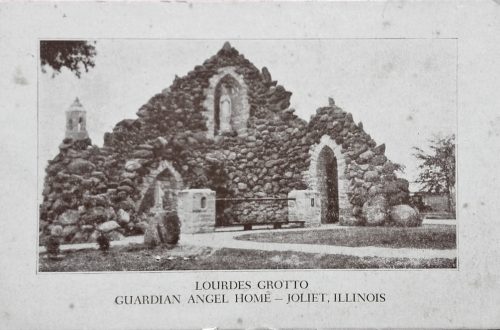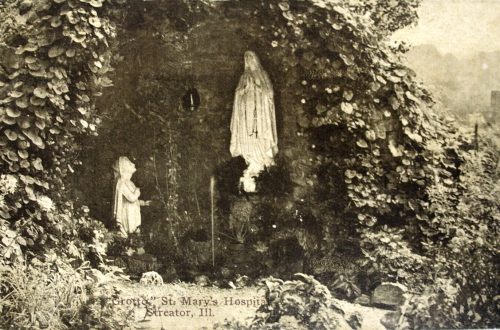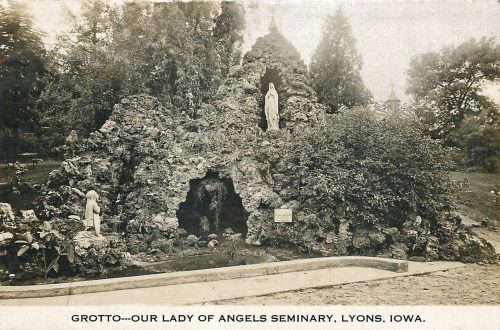Tucson, AZ: Mission San Xavier Grotto
The Grotto at Mission San Xavier
The first Lourdes grotto to be built in the state of Arizona was undoubtedly that at San Xavier Mission church near Tucson. Mission San Xavier was founded in 1692, and construction on the present church building began in 1783 (making it the oldest European building in Arizona). The rocky hill near the church had long been surmounted by a cross (a cruz mayor), and Bishop Granjon of Tucson had the idea to make a shrine there using the rocky terrain to create a realistic cave similar to the Massabielle cave at Lourdes, and in honor of the 50th anniversary of the 1858 visions.
Work was begun by the end of 1908, according to a December 27 Arizona Daily Star article about the restoration of the Mission: “New ideas have been put into process of execution, among them being the building of a grotto of Our Lady of Lourdes, a replica, in the butte just a few yards from the Mission itself.” Skilled miners hewed out the rocky hill, and the Bishop ordered a statue of Our Lady of Lourdes from France, with Father Duval of Nogales, AZ accompanying the sacred statue on its voyage to ensure its safe arrival. The Grotto was dedicated on December 3, 1909:
Unique Religious Services. On the second and third of next month, the Feast of the Patron Saint, Francis Xavier, will be celebrated at the San Xavier Mission. A special feature, the blessing of the Grotto, will make these services, which are held each year, more unique and impressive. The Grotto, which has recently been completed, is an exact replica of the famous one at Lourdes, France, and the Indians have the same faith in its healing powers as the thousands who yearly visit the one in France…. Father Matthias Rechsteiner of the Franciscan order, who is coming from Phoenix for the occasion, will bless the Grotto and preach to the Indians in Papago.
Arizona Daily Star Thursday, Nov 25, 1909, Page 5
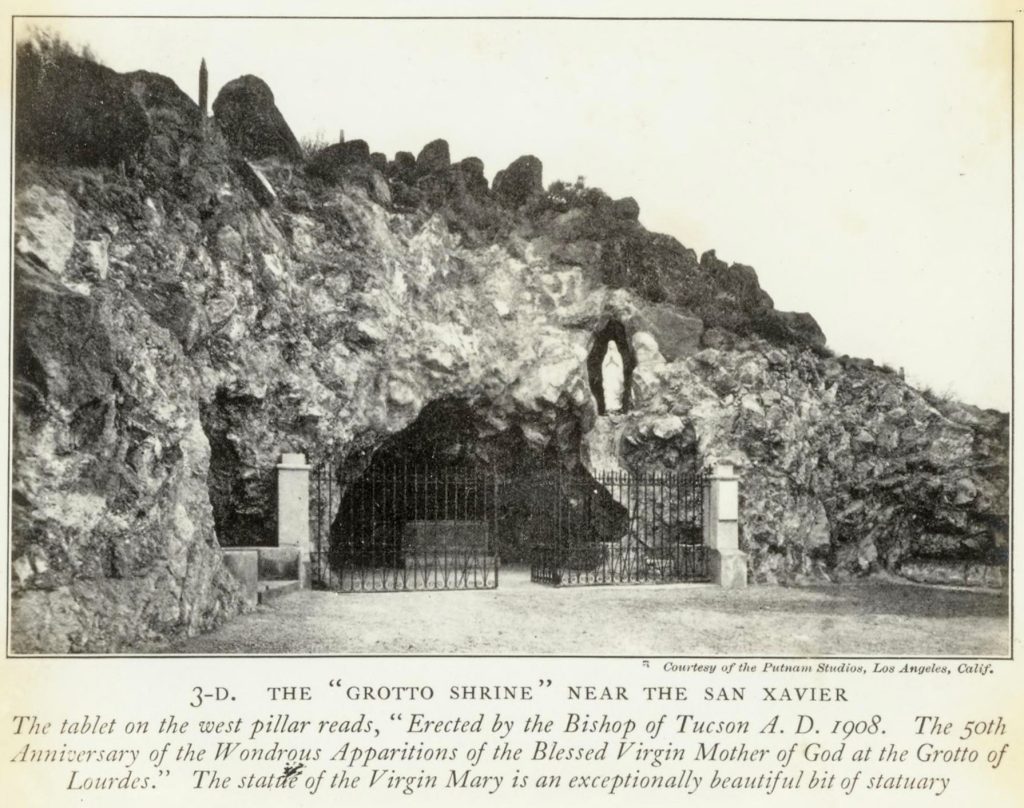
A 1915 article in the same newspaper described the grotto:
Grotto of Lourdes Reproduced Expert miners were employed to excavate the Grotto, so as to carry out in detail the original Grotto at Lourdes. The Grotto is protected by a rood-screen, which was wrought from exact measurements of the one at Lourdes. The conventional fleur de lis alternates with each picket and the gate is surmounted by a small gold cross. Within the Grotto is the altar, and in front of the altar is a Maltese Cross inlaid in the floor, and around this cross are twelve stars, also inlaid. At each end of the screen are concrete pillars, surmounted by large urns for flowers or vines.
Above the Grotto, in a niche hewn from the solid rock, is the life size statue of the Virgin in every detail like the statue above the Grotto at Lourdes. This statue was brought from France, Father Duval of Nogales, Arizona, making the long journey across the continent and then the sea, that the precious treasure might be brought safely and reverently to its final abiding place.
Arizona Daily Star, Sunday, Aug 15, 1915, Page 42
By the 1920s after the restoration of the Mission, it had become a tourist destination for American travelers from across the US, and the grotto was mentioned in numerous newspaper articles.


Sometime between 1940 and the 1950s, a Bernadette statue was added to the grotto:
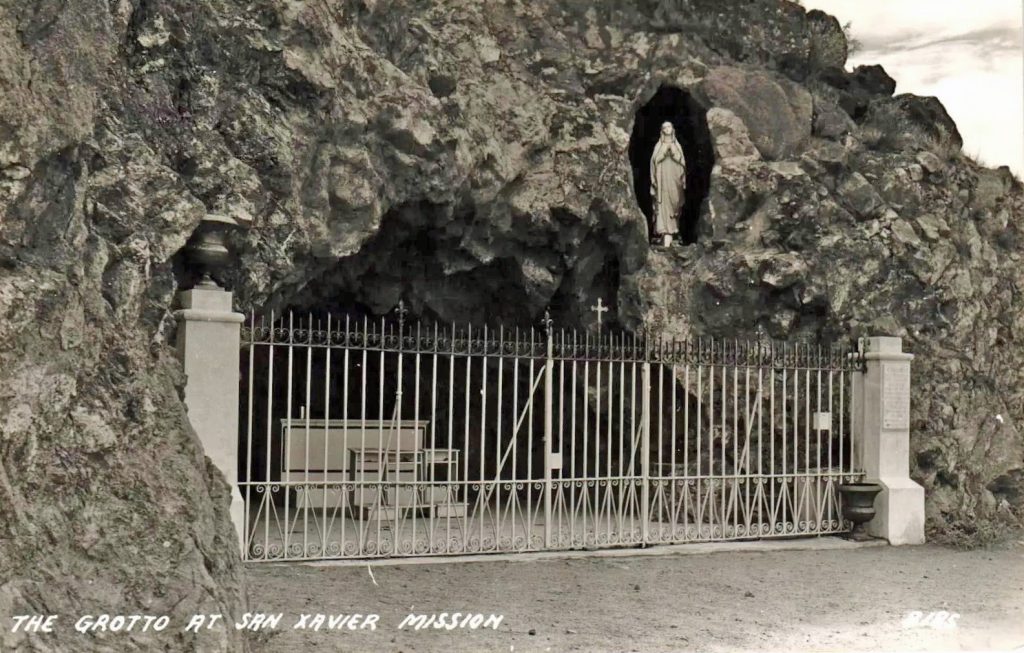
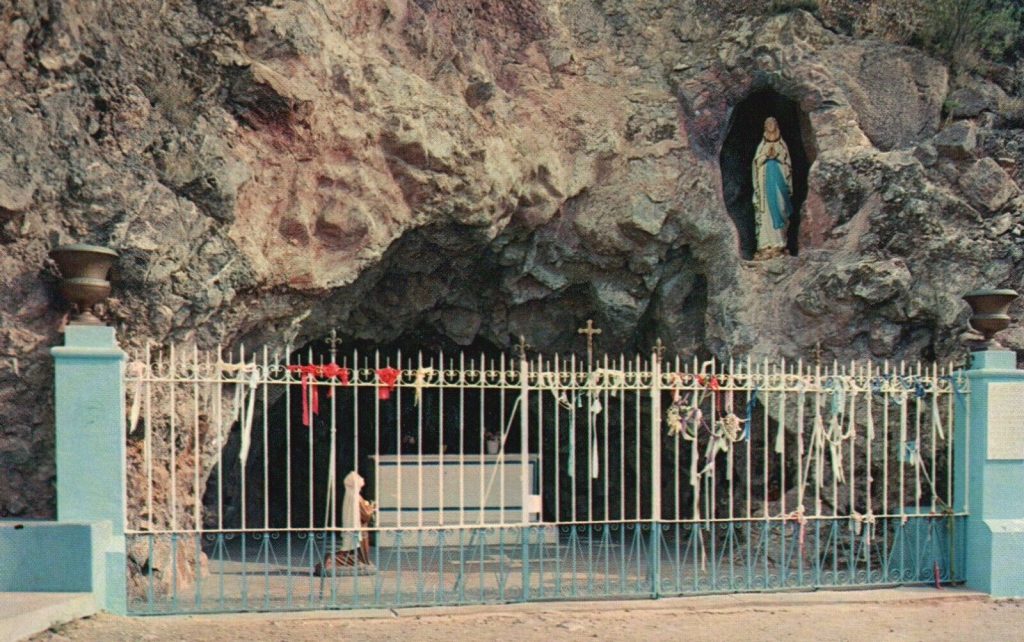
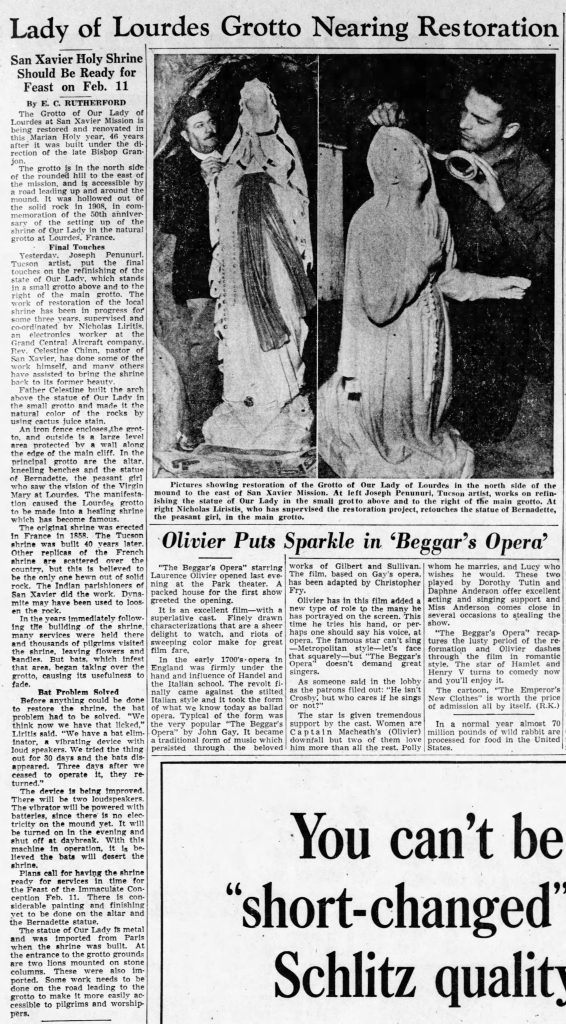
The grotto was restored for the Marian year celebration in 1954, as detailed in a nearby article. By that year, the Bernadette statue had not just been added, but had also needed restoration. This indicates that the Bernadette had likely been added by the early 1940s (perhaps inspired by the popularity of the Song of Bernadette film (1943).
Interestingly, that 1954 article stated that the original statue of Our Lady of Lourdes was made of metal, something that is surprising given the 2007 event, below.
Additionally, the article mentions that Father Celestine (who served at the Mission and in Tucson from 1931 to around 1960, and was a noted authority on Spanish-American Church architecture) “built the arch above the statue of Our Lady in the small grotto and made it the natural color of the rocks by using cactus juice stain.”
It is evident in comparing the 1940 HABS photo with the later c.1940s (left) postcard photo above, that the niche containing the statue of Our Lady of Lourdes had been widened at the top, perhaps due to crumbling rock that required repair (and cactus juice stain).
Large pilgrimages took place at the grotto in the next Marian Year of 1958: the 100th anniversary of the visions at Lourdes, and the 50th anniversary of the construction of the San Xavier Mission Grotto:
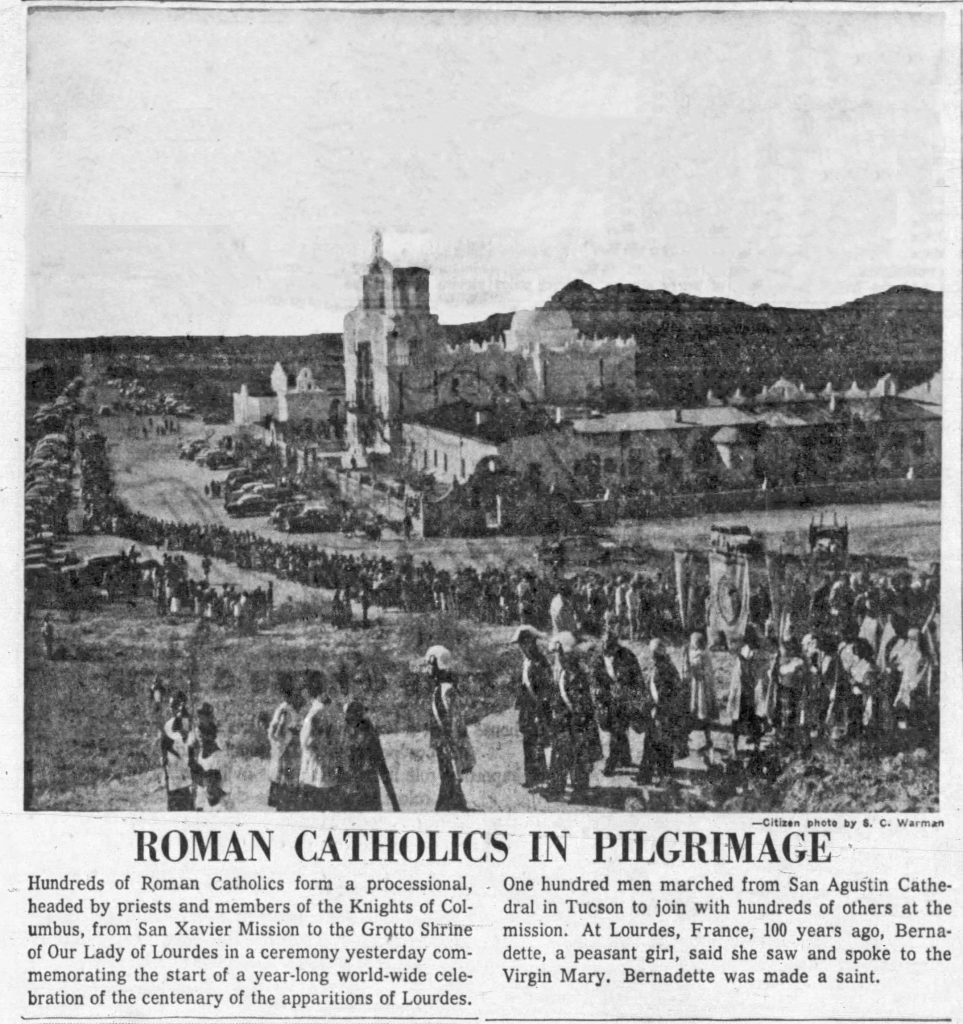

In 2007, local residents were shocked and saddened to learn that the century-old statue of Our Lady of Lourdes and 60+ year-old Bernadette statue had been senselessly smashed by a mentally-ill man (although it’s not clear how a metal statue could have been smashed, if indeed it was metal as identified in the 1954 article). Both statues were replaced after the incident.
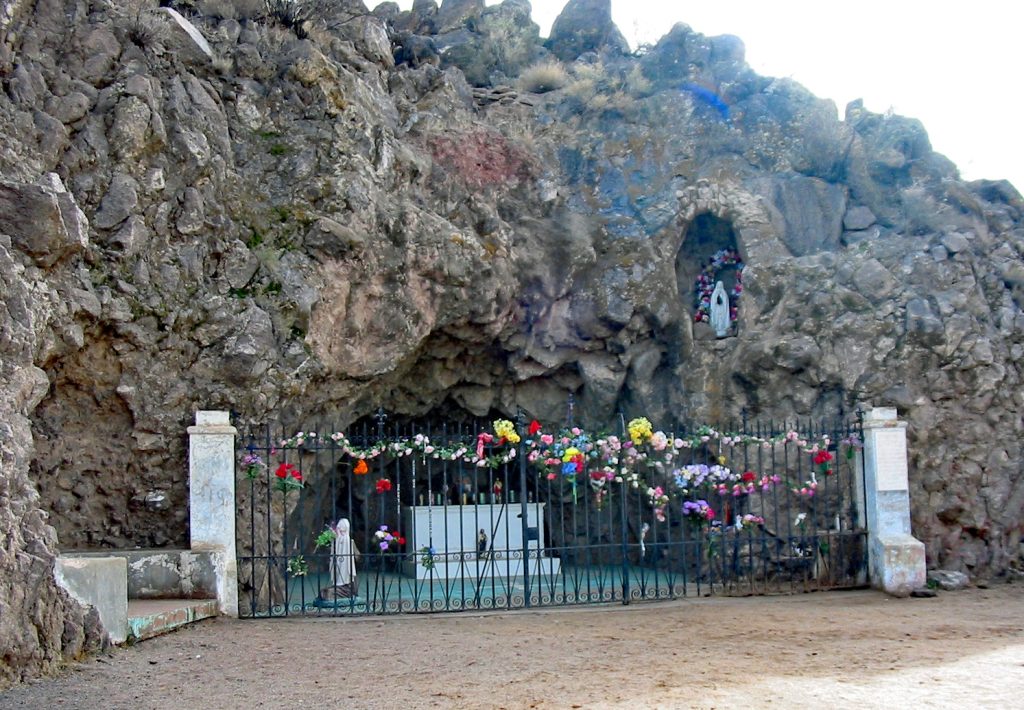
Today, the Grotto at San Xavier Mission continues to be a beautiful, peace place of prayer that welcomes thousands of people every year to its stunning setting desert and skies.


